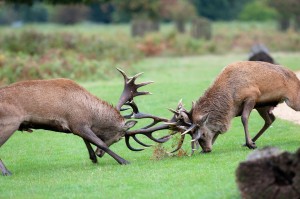 One thing I think most of us writers aspire to is being able to surprise our readers. After all, if the reader knows from page one what the outcome will be — boy gets the girl and they live happily ever after — that doesn’t make for a terribly interesting or suspenseful book. On the other hand, I believe we owe it to our readers to not blindside them. What I mean by that is throwing in a curve ball that has no relation to anything else in the book. Somewhere in there is a happy medium where the reader can be surprised, shocked, maybe delighted by the twists in the plot, but when they think back, they can see the germination of that plot twist. It was there all the time, just under the radar. It fits and it makes sense.
One thing I think most of us writers aspire to is being able to surprise our readers. After all, if the reader knows from page one what the outcome will be — boy gets the girl and they live happily ever after — that doesn’t make for a terribly interesting or suspenseful book. On the other hand, I believe we owe it to our readers to not blindside them. What I mean by that is throwing in a curve ball that has no relation to anything else in the book. Somewhere in there is a happy medium where the reader can be surprised, shocked, maybe delighted by the twists in the plot, but when they think back, they can see the germination of that plot twist. It was there all the time, just under the radar. It fits and it makes sense.
I’ve noticed there are two ways to do this. Continue reading “Writing Sleight of Hand”

 Storytelling is as old as human DNA. As old as language. As old as Joe Neanderthal sitting around the fire at the mouth of his cave, telling the group what happened that day.
Storytelling is as old as human DNA. As old as language. As old as Joe Neanderthal sitting around the fire at the mouth of his cave, telling the group what happened that day. The first symptom of a poorly written fight scene is: too much violence. Characters flail away at each other in a multitude of fancy ways, the body count rises, the gore gushes, and it all blends together in an emotion-numbing jumble until readers are tempted to skip to the end to find out who wins so we can get back to the story. The writer who doesn’t know what he really wants from the fight covers it up with technical details and mayhem. Watch a Transformer movie if you don’t know what I mean.
The first symptom of a poorly written fight scene is: too much violence. Characters flail away at each other in a multitude of fancy ways, the body count rises, the gore gushes, and it all blends together in an emotion-numbing jumble until readers are tempted to skip to the end to find out who wins so we can get back to the story. The writer who doesn’t know what he really wants from the fight covers it up with technical details and mayhem. Watch a Transformer movie if you don’t know what I mean.